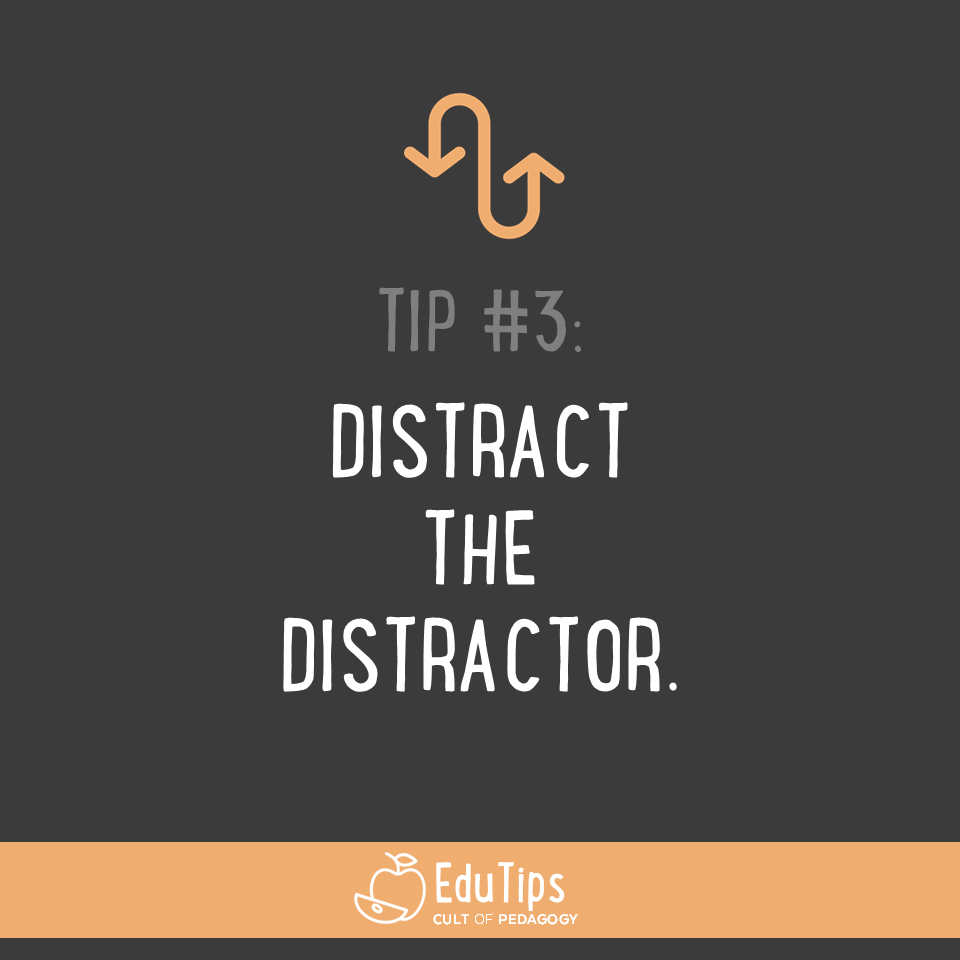Sponsored by Reading Progress in Teams.

Watch a video version of this EduTip on Instagram.
This is a subtle little teaching move you can use to stop off-task behavior in a class session and get things back on track without drama.
The strategy is this: When a student is exhibiting some distracting behavior, instead of calling them out or publicly disciplining them, just ask them a lesson-based question that you know they’ll be able to answer. This stops their behavior and refocuses them without anyone missing a beat.
Here’s an example: Suppose your class is in the middle of a Philosophical Chairs discussion. That’s where half the class takes one side of a debatable question and the other half takes the other side, and each side sends one representative at a time to speak on their behalf. Say they’re debating raising the minimum wage, and each side has three articles they’re using to support their positions. Although the discussion has been going well, there are two girls on the “pro” side who are clearly not talking about minimum wage. They’re kind of huddled in the back of the group and are giggling about something quietly.
Now one way to handle this would be to call them out, to stop the discussion entirely and tell them to stop talking. This might work, but it could also create new problems:
- It would stop the flow of the discussion, which would probably cause whatever student was debating to forget their train of thought.
- It would embarrass the girls who are talking—now this may be your goal, because that negative attention might straighten them out and make them refocus. On the other hand, it could also initiate a power struggle with the girls, who might give you attitude back and then you have a whole show going. At this point no one is debating about the minimum wage and everyone’s got their popcorn out to watch what happens next.
- It doesn’t serve the ultimate purpose, which is to have every student—including the two girls—focus on the debate and actually learn something from the experience.
What you can do instead is redirect the girls by asking one of them a lesson-based question. The key is, it must be a question they CAN answer. This is not a gotcha moment, not a time to draw attention to the fact that they weren’t paying attention. What you’re basically doing is acting as if they were focused all along, pulling them back into the current activity and getting them back on track.
In this scenario I would use the articles. I’d wait for a natural pause in the debate, then I’d say something like, “Gabby, there’s a quote in the Post article that I think would be useful for this point in the conversation. It’s on page 2, second paragraph. Would you mind reading it out loud?”
Gabby has the article in front of her, like everyone else, and reading it out loud doesn’t require her to come up with an answer or know what’s happening in the debate, but she can follow these instructions easily, bringing her right back into what we’re doing without any embarrassment. It’s as if she’s been paying attention all along, and we never had to lose a step as a class.
Because there were two students involved in this example, I just had to use the technique on one of them. The other student will get the message either way.
So the next time a student is distracting your class, redirect them with something in the lesson and see how it goes.
See all EduTips here.

Okay, this is fantastic. Simple, but fantastic. Embarrassed that I haven’t thought about it before. Thank you!
This is great advice. I can see how this will help save valuable teaching minutes.
Great tip! Thanks for this.